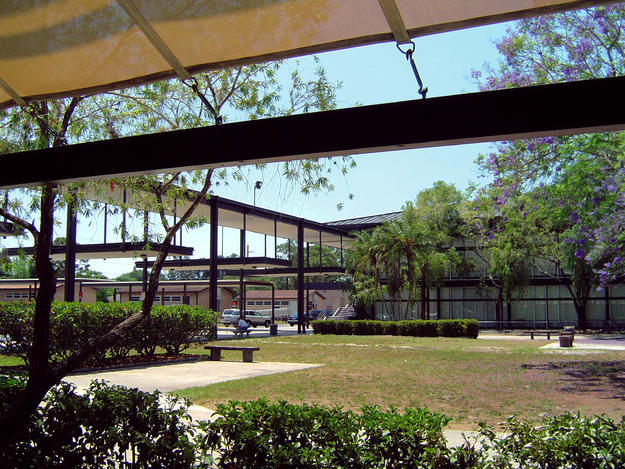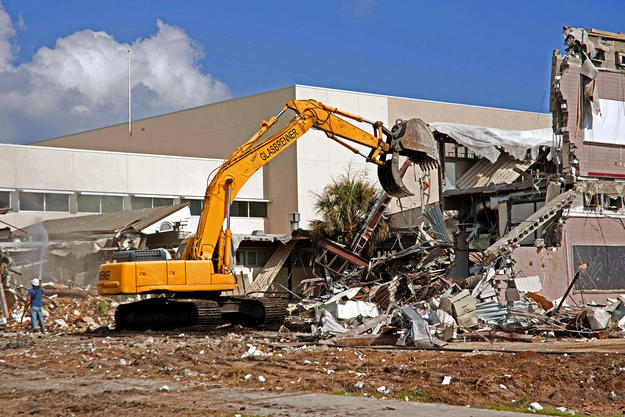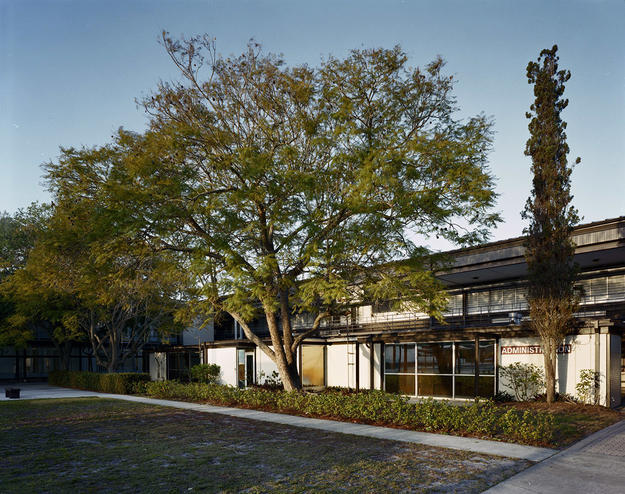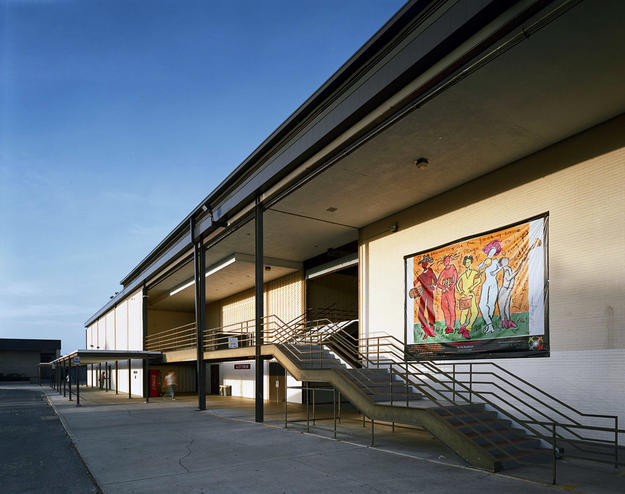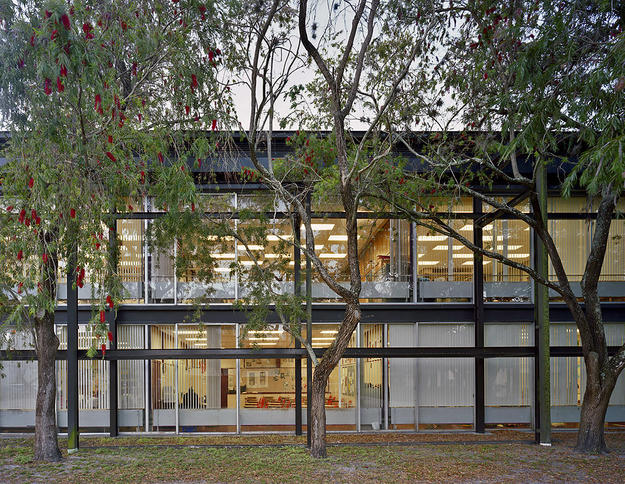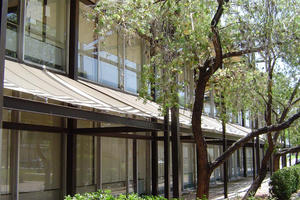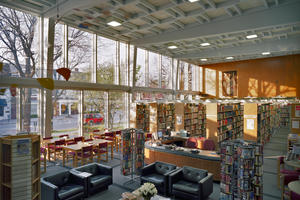Main Street Modern: Riverview High School
Riverview High School was designed by Paul Rudolph, one of the leaders of the Sarasota School of architecture, a regional modern movement focused on designs especially suited for the climatic conditions of Florida’s Gulf Coast. Rudolph incorporated passive ventilation, day lighting, and shading into his designs for the school. The school first opened in 1958.
Over the years, Riverview sustained unsympathetic alterations to its design and systems, including the introduction of air conditioning, which weakened its environmental qualities and diminished its architectural appeal. Despite the building’s significance as a notable work of modern architecture, the School Board of Sarasota County announced plans to demolish it, as part of a phased reconstruction of the Riverview campus. A vigorous campaign for its preservation followed the board's announcement.
Despite efforts, Riverview High School was demolished in 2009
The school was one of a group of modern sites included on the 2008 World Monuments Watch as “Main Street Modern.” The listing was to encourage alternatives to demolition and to build on local and international advocacy efforts to preserve them. This listing was also intended to call attention to the at-risk modernist buildings that characterize the civic architecture of post-war America.
Following the inclusion on the Watch, we supported the efforts of a committee of Sarasota architects to demonstrate the feasibility of preserving and rehabilitating—rather than demolishing—the mid-century building. The result was a design competition organized by the Sarasota Architectural Foundation. After the first phase of the competition, we provided additional support for the winning entry to be further developed into a viable proposal. We also sponsored a project of the University of Florida College of Design, Construction and Planning to prepare architectural drawings of the building. A student-led effort resulted in a valuable set of drawings, executed to the standards of the Historic American Buildings Survey. Despite these efforts and the development of a viable plan for preservation, the building was demolished in 2009.
Designed to accommodate the local subtropical environment, the building incorporated design ideas that have attracted renewed interest as concern for climate change has grown. Its significance was demonstrated by the national and international attention that local mobilization was able to attract. The campaign, which received the support of world-famous architects, also showed the power of design for reuse as an advocacy tool.

